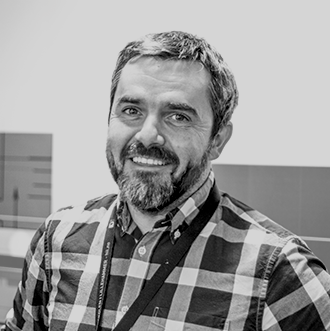
In this post, Jon Jack and Tracey Madden, from the Learning Design Service within Educational Design and Engagement, reflect on their team’s use of student personae in ELDeR workshops when designing and redesigning courses and programmes. This post is part of the Hot Topic ‘Revisiting the Hybrid Teaching Exchange‘.
The Learning Design Service is part of Educational Design and Engagement in Information Services. As part of its remit, it provides ELDeR (Edinburgh Learning Design Roadmap) workshops for academic teams to (re)design courses and programmes, including facilitation from the IAD and representation from School-level Learning Technologists, Professional Services, and Librarians, along with students and/or alumni.
It is essential to keep people at the heart of the design process and as part of this we use personae. A persona is an architype rather than a stereotype, and though not a ‘real’ person, needs to be realistic. Using personae is not a substitute for working with people, but a supplement.
At the start of an ELDeR workshop we ask the academic team to consider the students for whom they are designing. We then ask them to think if they may fall into groups, for instance, those studying full-time or part-time, or, in the case of a redesign, we may suggest they think of the situation of students studying the current course, compared with the redesign. We then ask them to draft a student personae for architypes based on these different groups, with some detail about their experience, strengths, weaknesses, goals and needs.
We have found that this exercise brings about conversations that academic teams may not have had before concerning students. We encourage staff to think about what could be done practically to improve anything that causes concern, and if this is something that can be done within the design, or if it needs effort at a higher level, for instance working on the perception of the discipline or the admissions process. Their ideas then form part of the design or else the action plan that is the culmination of the workshop.
Of course, building personae like this relies on what we already know about their students, which might not be a complete picture. Students involved in the workshop also bring their own experience, but we need to think wider than this. When we can, we bring in analysis of demographic data about students at Edinburgh; however, we point out that such data has gaps and inaccuracies: students do not always report personal details about themselves (e.g. if they have a disability or are care-experienced) even if they may receive support because of it, particularly at postgraduate level. Hence we encourage academic teams to design beyond known data, either from individuals or datasets.
To provoke a wider conversation around designing for a broader cohort we created a range of pre-made persona that would encourage reflection of the design of curricula with accessibility and inclusion in mind. Since the use of personae can cause concern about the possibility of stereotyping, we took advice from experts from Student Disability Support and Widening Participation. Following this, EUSA enabled us to share our first draft with over 70 student reps, graduate and postgraduate, who gave us valuable insights into both improving the wording but also suggesting many new architypes for ‘students’ that they wanted staff to think about when design. This enabled us to produce a set of personae that are not only realistic as students (in our experience) but also sensitively written. Because we work across the University, these personae are general to all disciplines and levels of study. However, they have been made available as an OER (open educational resource) so that they can be edited for use in different design settings (e.g. designing induction events for undergraduates).
Throughout ELDeR workshops, we turn to the personae and reflect on how such students would be enabled to thrive. We will continue to use this combination of persona approaches because it allows us to initiate conversations about learning design with academic staff, which extend beyond content and beyond the students we know.
We are interested to see how others adapt and use these personae in their own design activities.
To learn more about ELDeRs, you can watch the following vlog post: Course and Programme Design: Cycling through the ELDeR process.
 Jon Jack
Jon Jack
Jon is a Learning Technology Team Manager in the Educational Design and Engagement team (Learning, Teaching & Web, Information Services). He is a Learning Technologist and a Designer, with both roles complementing each other, and has over 18 years experience. His current focus is learning design and course design as part of the Educational Design and Engagement team, but has worked in learning technology roles globally, including, Canada, New Zealand and, most recently, Norway. He has a passion for design and all things visual, and is a lifelong learner: he is currently a student on the MSc Digital Education here at Edinburgh. When not learning new stuff, you can find him creating things in Lego with his wonderful 7-year old daughter.
Tracey Madden
Tracey joined Information Services in 2018 to work on Learning Design and service support. As well as facilitating ELDeR (Edinburgh Learning Design Roadmap) workshops, she provides support for those incorporating learning technology into their teaching. Before joining Edinburgh, Tracey held appointments in UK higher and further education, supporting curriculum design and staff development, including the use of learning technology. As part of the UK Physical Sciences Centre, she worked on national projects in such areas as OERs (open educational resources) and e-portfolios. Tracey is a Senior Fellow HEA, and currently mentors staff as part of the Edinburgh Teaching Award (EdTA).

